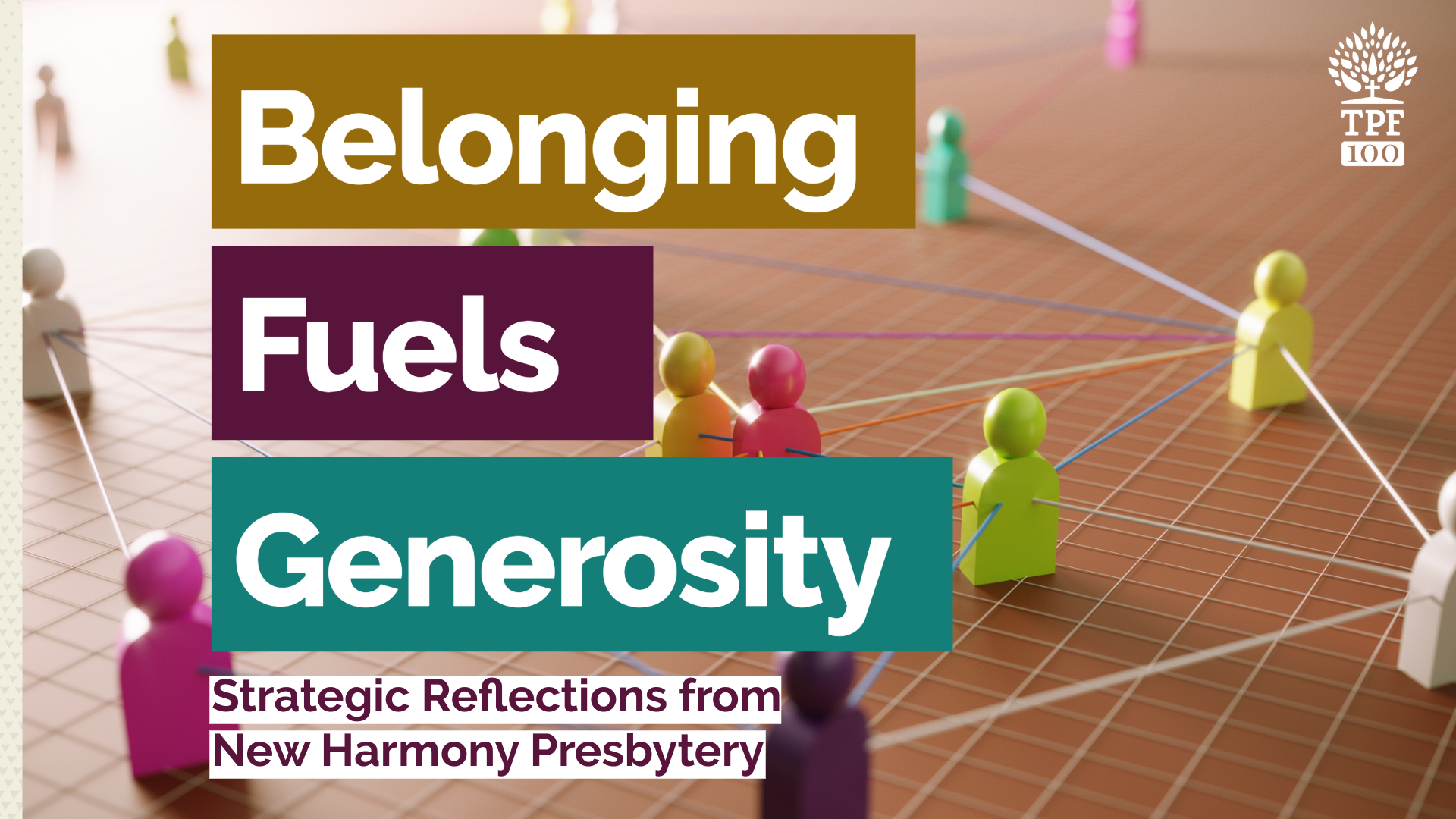Belonging Fuels Generosity: Strategic Reflections from New Harmony Presbytery

By Kristi Posewitz, TPF’s Director of Marketing
Recently, I had the opportunity to attend a gathering of the Presbytery of New Harmony in South Carolina, where a diverse group of leaders across congregations came together to worship under the theme: “The Presbytery of New Harmony…Belonging to God…Belonging to Our True Selves…Belonging to One Another.”
While this may sound primarily like a spiritual message, it also carries strong relevance for nonprofit and church leaders who are working to build sustainable, mission-driven communities. At TPF, we know from decades of partnership that generosity is not simply a financial behavior; it is a direct reflection of how connected individuals feel to your mission.
Below I share three insights from this experience that point to how a sense of belonging can become a strategic driver for generosity:
- Belonging to a Mission Greater Than Ourselves
In today’s crowded landscape of charitable causes, people give where they feel anchored. When individuals understand that their time, energy, and financial gifts contribute to something meaningful and lasting, they are more likely to engage—and to continue giving. The Presbytery’s worship reinforced this: when people recognize their place within a larger vision, they invest more deeply.For leaders, this means clear and consistent communication about your mission—not only what you do, but why it matters. Reinforce the impact donors and members are making. This creates a sense of ownership.
- Belonging to Our Purpose as Organizations
Every nonprofit and faith community faces the challenge of staying focused in a noisy world. The “belonging to our true selves” message reminded me of the power of organizational alignment. Leaders need to revisit core values regularly and ensure that programs, messaging, and funding priorities align with their foundational purpose.When donors sense that your organization is operating with clarity and conviction, they are more likely to trust you—and trust breeds generosity. Authenticity isn’t just a value; it’s a strategic asset.
- Belonging to a Network of Shared Investment
Finally, belonging to one another is more than community—it’s collaboration. At the Presbytery meeting, I witnessed church members and leaders coming together to support one another and explore avenues in which they can succeed together. In an age where church members and donors expect transparency and collaboration, this approach is not just inspiring—it’s effective.As leaders, we can foster networks of generosity that go beyond individual gifts. Consider partnerships, regional collaborations, or even shared service models that allow communities to experience the impact of giving together. People are generous when they know they are not alone.
Maybe it’s time to take a pause and review your current focus on belonging when it comes to your church members and donors. If you’re seeing a plateau in giving or engagement, it may not be a financial issue—it may be a relational one. Reconnecting people to your mission, your identity, and your network could be the key to revitalizing both engagement and generosity outcomes.
The takeaway from New Harmony is clear: organizations that lead with belonging—internally and externally—are positioned to thrive. That’s not just good theology, it’s good leadership.
Connect with TPF
Our experienced team is ready to help build a financial strategy tailored to your needs.